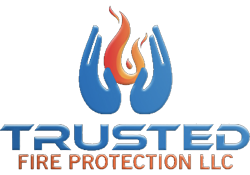Classifications of Fires
There are five different classes of fire. They are Class A, Class B, Class C, Class D, and Class K. Here is a brief description of the different classifications of fires.
Class A
Class A fires are fires involving ordinary combustibles such as wood, paper, and trash.
Class B
Class B fires involve flammable liquids or gasses.
Class C
Class C fires involve energized electrical equipment.
Class D
Class D fires involve combustible metals, such as magnesium, titanium, and sodium
Class K
Class K fires involve vegetable oils, animal oils, or fats in cooking appliances (restaurants).
Types of Fire Extinguishers
Verifying the correct fire extinguisher is a very important part of performing a fire extinguisher inspection. Fire extinguishers are designed to fight specific fires and are only rated to extinguish certain classes of fires. Below is a general description of the most common fire extinguishers.
Dry Chemical
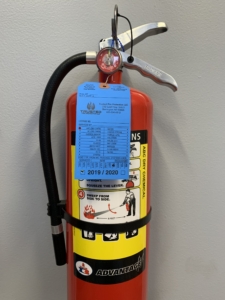
Inspected and certified fire extinguisher
Dry chemical fire extinguishers are the most common fire extinguishers. They range in size from 2.5#’s to 30#’s. The most common dry chemical fire extinguisher is rated for Class A, B, and C fires. There are also dry chemical fire extinguishers that are rated for only Class B and C fires as well as a dry chemical fire extinguisher for Class D fires. Dry chemical fire extinguishers need an internal maintenance every 6 years (known as a 6 year maintenance) and need to be hydrostatically tested every 12 years.
Water Based
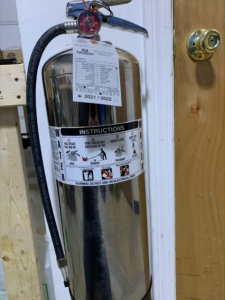
Class A Rated Water Fire Extinguisher
Water based fire extinguishers are typically only rated for Class A fires. There are some that are rated for both Class A and Class C though. It is important to read the pictographs on the front of the fire extinguisher to figure out the Class rating. Water fire extinguishers need to be hydrostatically tested every 5 years.
Carbon Dioxide (CO2)
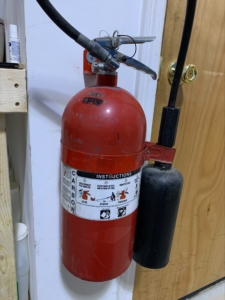
CO2 Fire Extinguisher
CO2 fire extinguishers are rated for class B and Class C fires. These fire extinguishers are under very high pressure so they do not have a pressure gauge like typical fire extinguishers. To make sure that they are within range they need to be weighed. CO2 fire extinguishers need to be hydrostatically tested every 5 years.
Wet Chemical
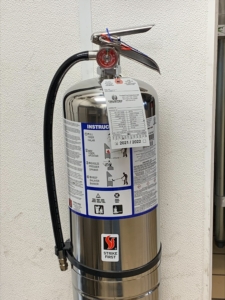
K-Class fire extinguisher for restaurants.
Wet chemical fire extinguishers are known as K-Class fire extinguishers. K-Class fire extinguishers are found in restaurants. They are specifically designed to extinguish grease fires that occur in cooking appliances. They do however have a Class A rating. K-Class fire extinguishers need to be hydrostatically tested every 5 years.
Clean Agent
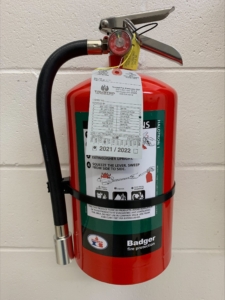
Newly installed clean agent fire extinguisher
A clean agent fire extinguisher is electrically non-conductive, volatile, or gaseous. When these fire extinguishers are discharged they quickly evaporate and leave no residue. Clean agent fire extinguishers are ideal for server rooms or any place that has highly valued equipment or assets. Many people know these as halon fire extinguishers however there are many other gasses such as Novec 1230, Halotron, and FE-36 to name a few.
